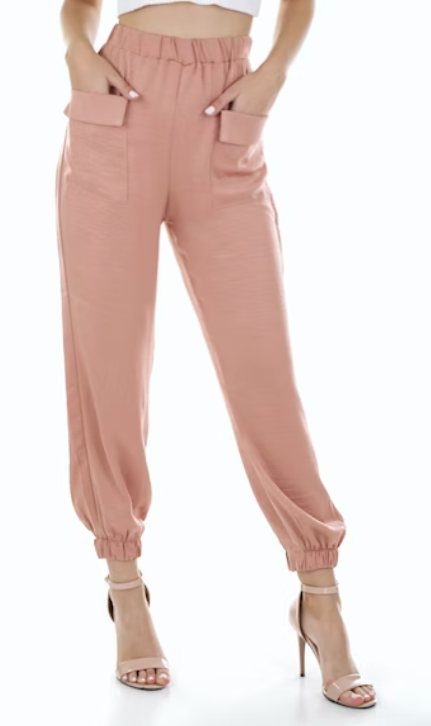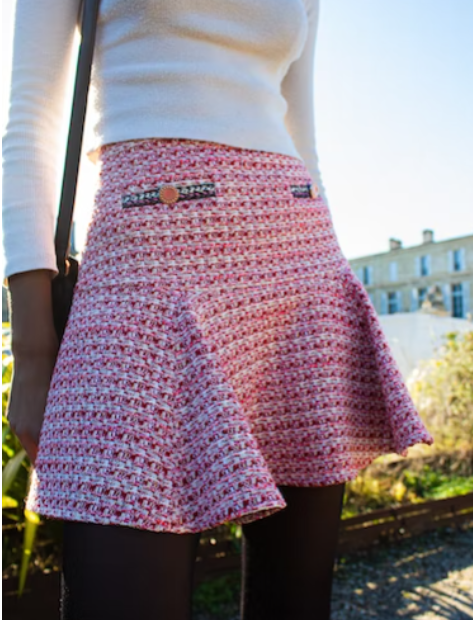Estimated reading time: 5 minutes
Table of contents
Which type of vilene interlining do you use to reinforce your waistband?

This question is one many customers ask therefore I shall explain. The customer who asked this question draws the waistband on the pattern. That means the waistband is not straight but slightly rounded in the waistline. Also in this question: different types of fabric for the waistband. Should it be stretchy or not?
In a next blog we will discuss a straight waistband using the Fuse and fold waistband shaper by Vilene. Would you like to read more about Vilene? On this page you will find more info: Vilene interlining and other interfacing. Back to the rounded waistband in the following fabrics:
- a thin non stretch fabric
- a thin stretch fabric
- a heavier non stretch fabric
- a heavier stretch fabric
Waistband interlining in a skirt or pants in a non stretch fabric
Depending on how stiff your waistband should be you can use Vilene H410 in a supple fabric and the H250 or C900 in a heavier fabric. The last one is the stiffest of the three types.

You can actually use all types of vilene and interlining for a waistband, provided it gives the stretngth required. The advantage of H410 is the reinforcing length threads and the H250 and C900 are a bit papery. Imagine the way a piece of paper feels and moves when you hold it. That is what the H250 and C900 kind of feel like. Only you can not wash paper, but these two vilenes can be washed.
One important point is that you sew in a lace tape on the waistline. Because the pattern is rounded in the waist everything you fuse to it will be a little stretchy. (the waistline is not straight but cut on the bias) The lace tape prevents the stretching on the waistline and keeps it in the correct size.
I prefer the white because it is nice and thin and you do not feel it: Lace tape white cotton 10m
Waistband interlining in a skirt or pants with elastic


In a skirt or pants where your waistband has elastic you do not need to iron in vilene or interlining. Except when the fabric is very thin, coarsely woven or easily damaged. In that case a thin interlining will give your waistband a little extra strength and keep it in shape. It also allowed you to wear the garment longer.
The skirt in the picture is made from a stretch fabric with an elastic waistband. Because the pink fabric is very thin there is a piece of jersey fuse interlining ironed into the waistband. This helps the waistband to stay in shape and gives it a little extra sturdiness.
Waistband on a skirt or pants made from a stretch fabric
If your fabric has stretch and you want to keep that in the waistband you can use one of the strecth vilene interlinings. I would not choose the H609 because it is very thin and very stretchy, not really waistband material. The other two types are suitable. The jersey fuse vilene interlining and the vilene interlining G770. The firts one is a thin one, the second is the thicker one we use for jackets etc. Both stretch only in the width…

If you prefer a little reinforcement choose the jesey fuse. Rather have a heavier waistband? Try the G770 instead. User manual of all these interlinings can be found in the attachment with the product in the shop.
Please note: When cutting these stretch interlinings rememder to check the stretch, if you cut it the wrong way it will not stretch…


